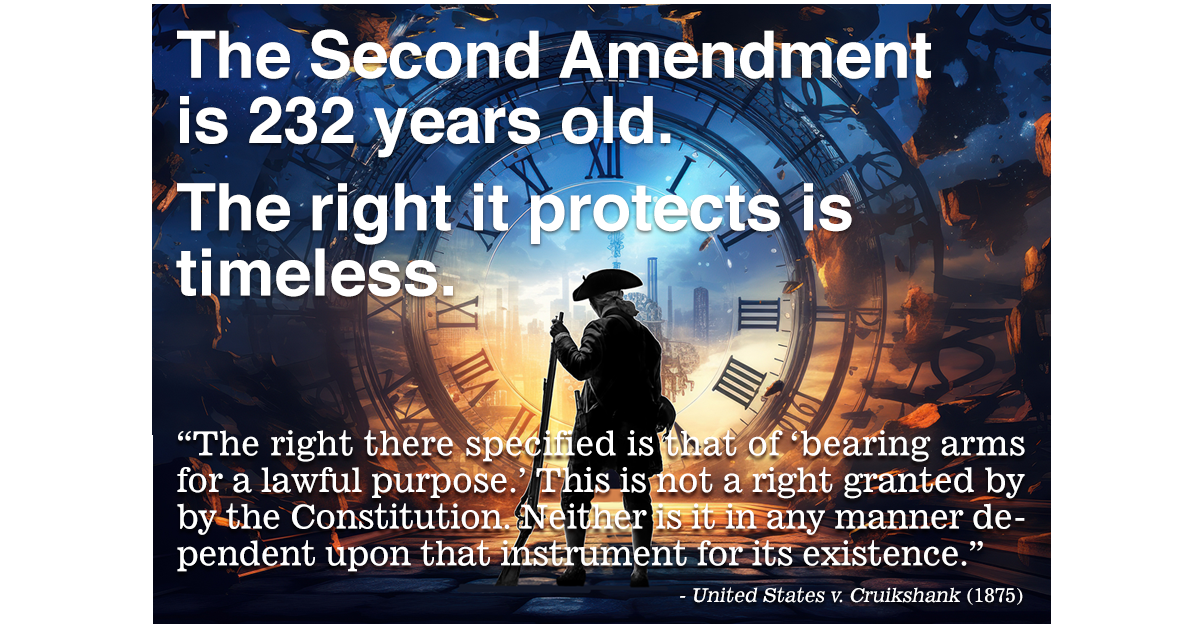As Supreme Court Justice Antonin Scalia noted in his majority opinion in District of Columbia v. Heller, the core of the Second Amendment is self-defense, which is a natural right common to just about every species of life.
What the Second Amendment protects is the right to have an effective defense to repel or defeat attackers, whether they are criminals or foreign invaders. It was included in the Bill of Rights, the first ten amendments to the U.S. Constitution. The quotation in the picture comes from Supreme Court Chief Justice Morrison Waite, who wrote the majority opinion in United States v. Cruikshank, which was decided in 1876.
The U.S. Supreme Court has never considered the Second Amendment to be anything other than an individual right of the people to posses and carry weapons, a broad category that includes a wide variety of weaponry, from swords and halberds to all modern weapons, including firearms and electric devices such as Tasers, even those not in existence at the time the Bill of Rights was ratified on December 15, 1791 (Caetano v. Massachusetts). It even includes defensive measures like ballistic vests.
Some ill-informed individuals try to claim the Second Amendment covers only single-shot muzzle-loading Muskets like the British Long Land Pattern musket used by both sides in the Revolutionary War but the truth is the “Brown Bess” was 50 years old at the time of the battles at concord and Lexington and repeating rifles had been used by the Danish Army as early as 1659 and the Austrian Army adopted a 20-shot, magazine-fed, repeating rifle during the Revolutionary War. The British used the Ferguson, a breech-loaded rifle, at the Battle of Yorktown.
Those who won’t learn history are condemned to repeat it, usually in summer school.
There are a number of people, including scholars and even Supreme Court justices, that believe the Second Amendment protects a collective right to serve in a militia. These beliefs are not supported by either history or Supreme Court rulings. These views didn’t gain any strength until the 20th Century when a number of people chose to misread or misinterpret the opinion in United States v. Miller. The opinion, written by Justice James McReynolds, said only that possession of shotguns with barrels less than 18 inches long are not protected by the Second Amendment because they are not commonly used by the militia and are not suitable for service in a militia. That’s it: That and the MIlitia Clause are almost the entire basis for the collective right interpretation.
You have the right to defend your life. In the United States, you have the right to be armed for that defense.

